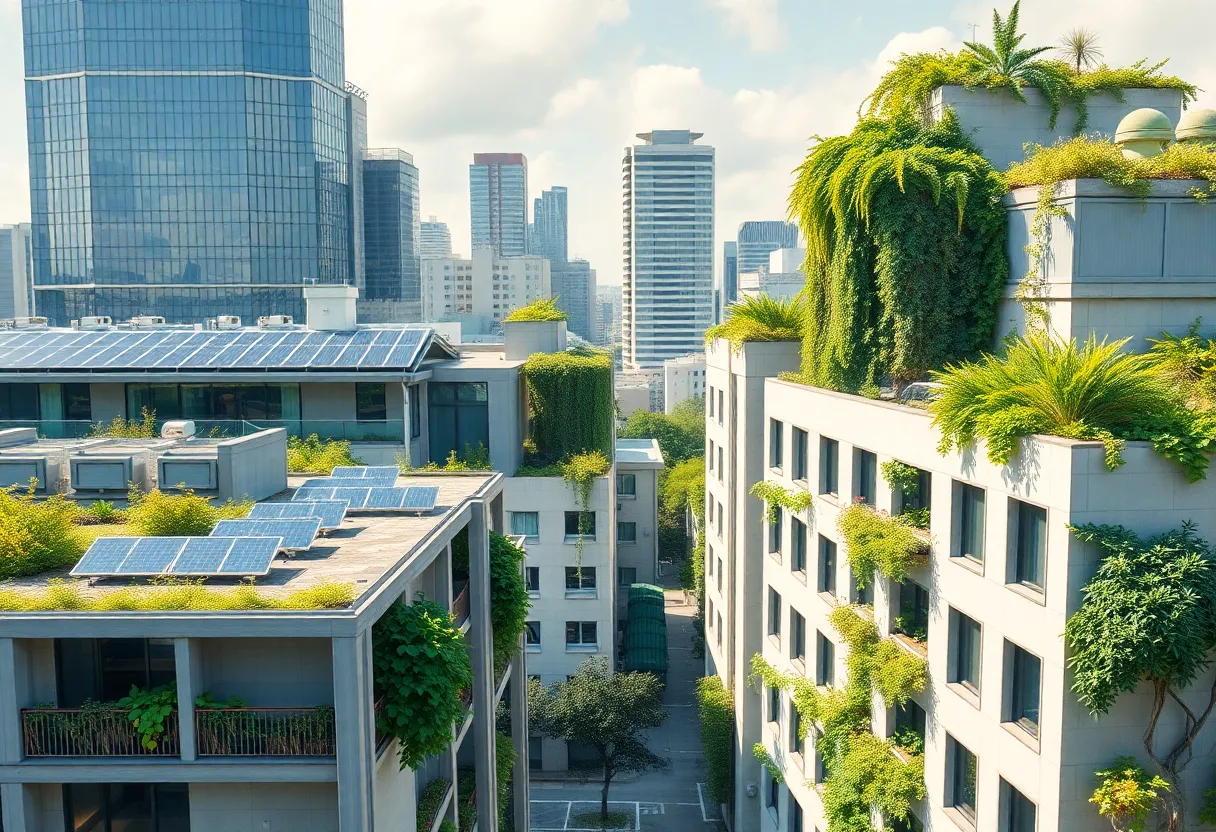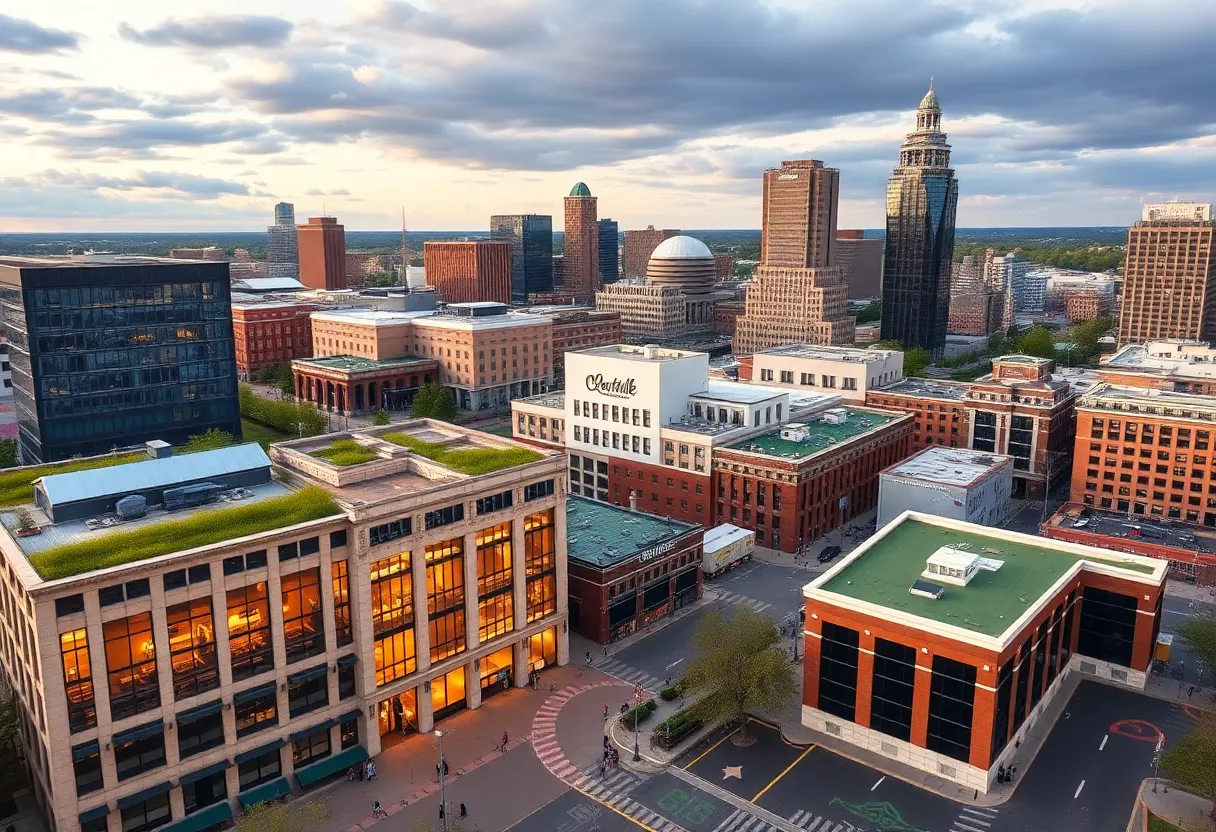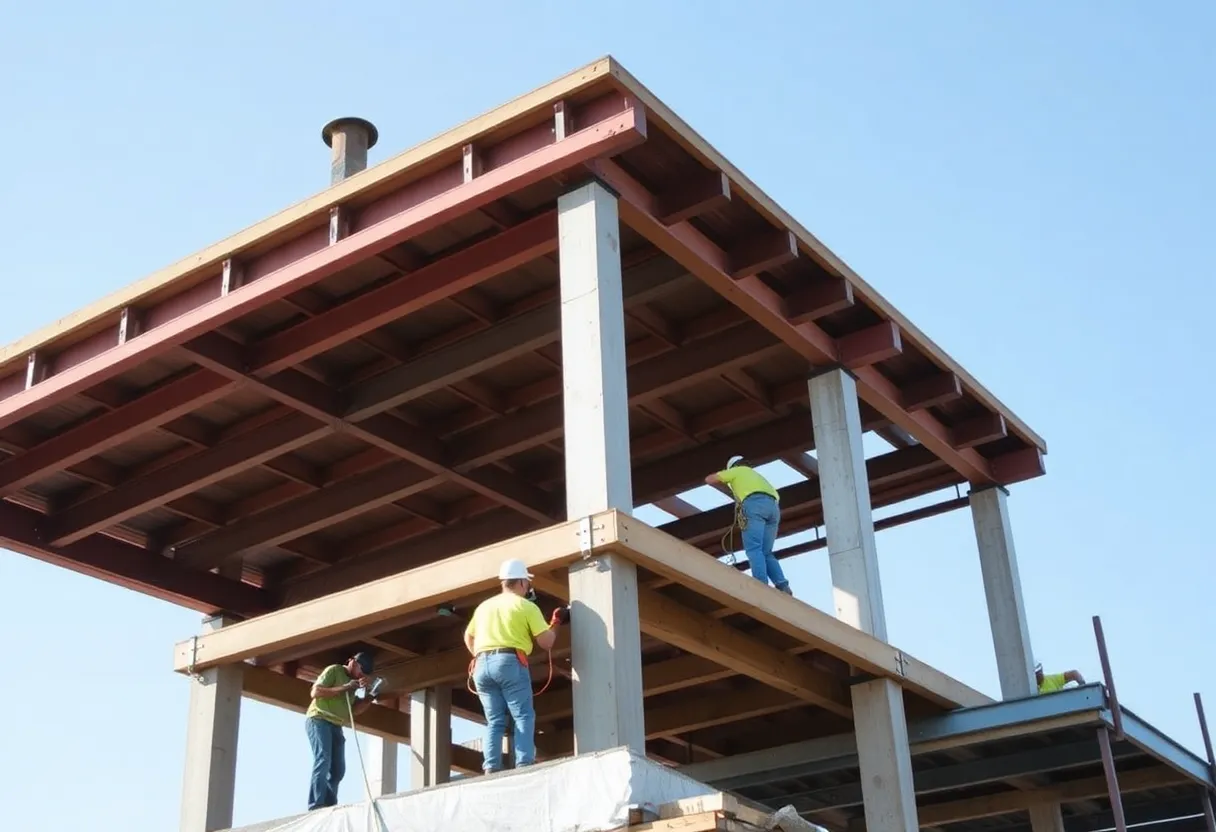News Summary
Green building certifications are evolving to emphasize stricter criteria focusing on operational emissions and long-term sustainability. With updates to LEED and BREEAM, both systems are driving change in how buildings manage carbon emissions, promoting corporate net-zero commitments, and enhancing property value through sustainable practices. This shift highlights a broader commitment to sustainability in the built environment and aims to streamline the path to decarbonization in real estate.
Evolving Green Building Certifications Prioritize Operational Emissions and Long-Term Sustainability
Green building certifications are undergoing significant transformations, focusing on stricter criteria designed to effectively manage operational emissions and promote long-term sustainability. These changes mark a shift in how buildings are evaluated for their environmental impact and operational efficiency, impacting stakeholders from builders to tenants.
The latest versions of the Leadership in Energy and Environmental Design (LEED) and Building Research Establishment Environmental Assessment Method (BREEAM) certifications place a strong emphasis on decarbonization. Each certification introduces updated requirements and scoring methods that target both operational and embodied carbon emissions. The launch of LEED v5 earlier this year is a notable turn in this evolving landscape, with nearly half of all certification points now allocated to strategies aimed at cutting carbon emissions related to materials, energy use, cooling systems, and transport emissions.
As corporate occupiers increasingly make net-zero commitments, they are also prioritizing operational performance in their buildings. The latest guidelines under LEED v5 not only focus on sustainable building operations but also reward organizations for creating performance improvement plans. This proactive approach is vital in encouraging ongoing operational enhancements that align with corporate sustainability goals.
BREEAM v7 also reflects these evolving priorities by introducing a specific emphasis on managing and reporting whole-life carbon emissions. It aligns its criteria with global sustainability benchmarks and European Union taxonomy. With the introduction of these new requirements, achieving top ratings like BREEAM Excellent and Outstanding, as well as LEED Gold and Platinum, can drive significant improvements across the market.
Successful case studies exemplify these standards in action. For instance, a recent renovation of a Boston office earned LEED v4 Platinum certification, thanks to the implementation of state-of-the-art energy efficiency strategies, such as advanced heating, ventilation, and air conditioning (HVAC) systems. Powering buildings with clean energy emerges as a critical focus area, essential for obtaining high certification ratings.
For buildings seeking BREEAM certification, the designation of ‘Excellent’ typically places these structures in the top 10% of certified properties, while ‘Outstanding’ marks the top 1%. However, with a push for higher standards may come new challenges, including higher upfront costs and increased complexity in technical implementations.
Both LEED and BREEAM certifications reward projects that adopt advanced HVAC systems capable of adapting to fluctuating energy demand. This adaptability is crucial in significantly reducing operational carbon emissions. Additionally, the frameworks encourage the usage of building materials characterized by minimal embodied carbon footprints, necessitating a reevaluation of procurement strategies within the construction industry.
Obtaining LEED and BREEAM certification can also enhance property values and tenant appeal, as evidenced by research indicating green rental premiums ranging from 7.1% to 11.6% observed in various global markets. The redefined certification frameworks reflect a broader perspective on sustainability beyond mere regulatory compliance, addressing the imperative to mitigate climate risks and avoid potentially costly retrofits in the future.
Furthermore, BREEAM v7 includes benchmarks that promote net gains in biodiversity, extending beyond mandatory regulations in the UK. The stringent reporting obligations associated with certification guide organizations in devising effective strategies for attaining relevant credits, ensuring clarity in sustainability reporting.
Achieving green certifications requires a consistent engagement process among leadership, stakeholders, and project teams. It is essential for leaders to align sustainability objectives with broader commercial real estate strategies while ensuring that adequate financial resources are allocated to support implementation efforts.
Moreover, collaboration between landlords and tenants can foster co-funding initiatives for upgrades that align with certification standards, further advancing decarbonization goals and contributing to operational cost reductions. With the growing demands for sustainable buildings and the rise in corporate carbon commitments, the introduction of tougher green certification standards paves clearer pathways toward effective decarbonization efforts.
Best-in-class certifications not only provide strategic frameworks for creating high-performing, healthy buildings but also explicitly address evolving market needs. Looking ahead, the LEED for Cities Certification Cohort for 2025 includes 16 local governments committed to enhancing sustainability and public health initiatives, highlighting the collective effort towards a greener future.
Deeper Dive: News & Info About This Topic
Additional Resources
- JLL: Green Certifications Up the Ante on Long-Term Building Performance
- Wikipedia: Green Building Certification
- Baltic Times: Lemiste Centre Earns Top Sustainable Building Certification
- Google Search: Green Building Certifications
- PR Newswire: Central Plaza Awarded 4 Platinum Building Certifications
- Encyclopedia Britannica: Building
Author: Construction FL News
The FLORIDA STAFF WRITER represents the experienced team at constructionflnews.com, your go-to source for actionable local news and information in Florida and beyond. Specializing in "news you can use," we cover essential topics like product reviews for personal and business needs, local business directories, politics, real estate trends, neighborhood insights, and state news affecting the area—with deep expertise drawn from years of dedicated reporting and strong community input, including local press releases and business updates. We deliver top reporting on high-value events such as the Florida Build Expo, major infrastructure projects, and advancements in construction technology showcases. Our coverage extends to key organizations like the Associated Builders and Contractors of Florida and the Florida Home Builders Association, plus leading businesses in construction and legal services that power the local economy such as CMiC Global and Shutts & Bowen LLP. As part of the broader network, including constructioncanews.com, constructionnynews.com, and constructiontxnews.com, we provide comprehensive, credible insights into the dynamic construction landscape across multiple states.





